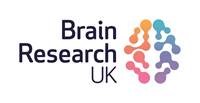Our work in the lab focuses on brain stem, spinal cord, and spino-muscular circuits. We use a number of approaches spanning ion channel physiology to behavioural assays to define these circuits.
Our goal
In many neurological diseases, quality of life is impaired due to disruptions to normal movement. We investigate how normal movement is produced by neural circuits, and how disruption to these circuits in disease impairs movement. Our goal is to lay foundations for new strategies aimed at improving movement in people with neurological diseases.
Neural Circuits for Movement
To understand circuits, we loosely think of forebrain circuits as those responsible for movement selection. These circuits inform brain stem circuits which produce the “commands” needed to accomplish the movement. Brain stem circuits in turn project to spinal cord organisation circuits: the spinal cord determines the sequence and timing of muscle contraction needed for the movement at hand. And finally, spino-muscular circuits between the spinal cord and muscles ensure that the amount of muscle contraction is appropriate for the task. The communications between the circuits is bi-directional: spino-muscular circuits inform spinal cord circuits which inform the brain stem, and the brain stem informs the forebrain. In addition, the cerebellum processes information from these motor circuits and then modifies them - for example, to assist with smooth movements. Not all of these circuits are necessary for all movements: there are instances, for example, where the forebrain informs spinal cord circuits directly.
- Circuitopathies
Many neurological diseases lead to impairment of movement. We use a number of models in the lab to study the circuits involved in this movement dysregulation. For example, one circuitopathy that we are studying leads to dystonia.
- Brain stem - spinal cord circuits
The ponto-medullary reticular formation is home to reticulospinal neurons. We have focussed on a region called the gigantocellular reticular nucleus (GRN) to identify how circuits in this region are wired and how activity of identified GRN neurons is related to locomotion.
- Spinal cord circuits
We focus on two core organisational circuits in the spinal cord: those producing locomotor activity, and those important for regulating hand grasp. We are particularly interested in how these circuits discriminate unexpected sensory input from the sensory input that the movement is expected to produce.
- Spino-muscular circuits
The spinal cord contains motor neurons - the nerve cells that connect with muscles controlling their contraction. We study how the nervous system ensures that the electrical signals in these motor neurons are controlled in order to produce the required amount of muscle contraction.
In addition, motor neurons die in motoneuron diseases (MNDs) such as amyotrophic lateral sclerosis (ALS). We study impairments in motor neuron circuits in models of MNDs.
- Stem Cells
We derive motor neurons from stem cells to study activity patterns in culture conditions (for example, when cultured with different types of cells), as well as to use for transplantation experiments to reinnervate muscle fibres.
 Close
Close




